What to do in the garden in September
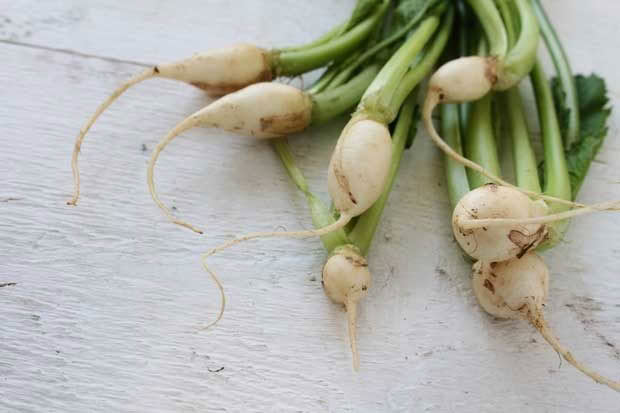
Try planting baby turnips and some bee-friendly plants this month.
Words: Jane Bellerby
VEGETABLES
• Stick with the tougher plants at this time of year. Peas, silverbeet, lettuce, potatoes and parsnips can all be planted now, and also onions.
• Have a good look at your available garden space and make a plan based on what you like to eat and how much of it you can grow.
• Check tools and watering systems.
• Keep weeding because those unwanted plants will be feeling the impulse of spring and germinating rapidly.
HOW TO GROW BABY TURNIPS
Baby turnips are easy to grow, will grow very fast and are ready to harvest just 4-5 weeks after sowing. They can be grated or sliced thinly and added to salads raw, or you can cook them.
The trick to growing great baby turnips is weather (cool and moist, so early spring is perfect), a sandy soil, and irrigation. Light, consistent irrigation over a sandy soil will grow plump, tasty turnips but you don’t want to under-water (roots will crack) or over-water (fungal diseases will move in). Sow seed about 1cm apart, then thin as they grow, with rows about 15cm apart. Baby turnips are ready to harvest when around 5cm across.
HOW TO COOK
Baby turnips can be boiled whole or chopped and steamed or roasted. Bring a pot of water to the boil and cook whole baby turnips for 20-30 minutes or until tender. Coat in melted butter or cheese sauce to serve.
To roast chunks of larger turnips, preheat the oven to 200°C. Par-boil prepared turnips for 3-5 minutes in boiling salted water. Add 150ml olive oil to a roasting tin and preheat in the oven for 5 minutes. Add the drained turnip to the tin and coat in the oil. Roast for 30-45 minutes, basting occasionally with the oil, until crunchy and golden brown.
Source: www.thinkvegetables.co.uk
SEPTEMBER FLOWERS IN THE GARDEN
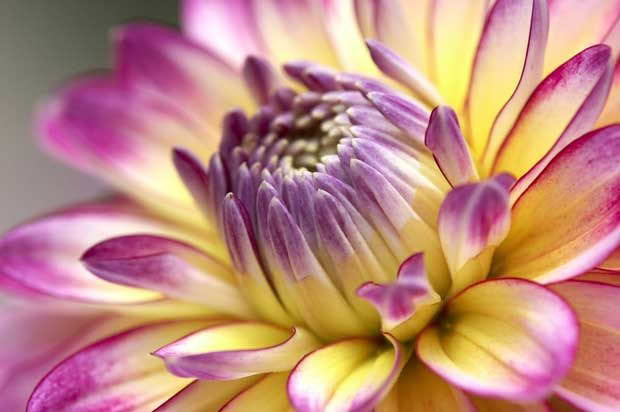
• Sow seeds and seedlings to fill any gaps among perennial plants.
• Division of perennials is still possible but care must be taken with plants that have already begun their growth.
• Comb out grasses and cut back old flower heads then use the grass combings as mulch around other plants. Grasses can also be divided still if you wish to bulk up their numbers.
• Winter flowering shrubs such as daphne, winter sweet, some hebes and luculia can be pruned to shape once the majority of the flowers are finished.
• Have stakes in position for supporting soft new growth from plants such as delphiniums and dahlias, over the next two months as the equinoctial winds blow.
IN THE FOOD GARDEN
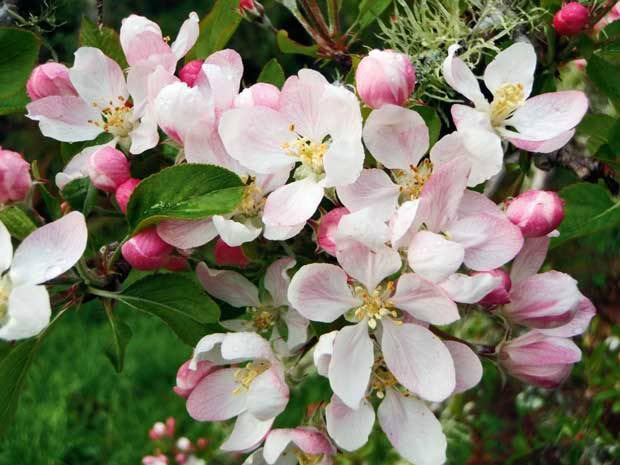
Apple Blossoms, a delicate haze in spring.
In September the weather can be fickle, the temperatures changeable and a fire is still sometimes necessary in the evenings so deciduous fruit trees in blossom are a welcome sight. Growing up in the 1950s and 60s in Hawkes Bay meant the September Blossom Parade. As a small child I was taken along and encouraged to ‘ooh’ and ‘ahh’ over the floats laden with fairies, weird unknown characters and the Blossom Queen. It wasn’t my thing and I didn’t feel comfortable in the noisy crowds of people.
But what I did like was the drive home past the flowering apple, plum and pear orchards. The floaty, delicate haze of blossom was ethereal and fantastic, and was soon followed by fresh green leaves and ripening fruit.
September storms and king tides will leave a mass of seaweed on the beach and we gather some of this to place around the fruit trees as part of their health programme. In years gone by we would also toss the seaweed into the branches of the trees as it helped stem curly leaf and sometimes brown rot, but we now grow a locally sourced resistant peach we’ve called Little White.
By asking around in your district you may be able to find high producing, disease resistant local varieties of seedling peaches and nectarines which can be easily grown from the stones.
Eat the fruit, save the stones and plant them into a seed bed. Protect well from slugs and snails, keep the ground moist, pot up the seedlings into bigger planter bags to grow on for the summer, then plant out next winter. It’s an excellent and easy way to provide plentiful fruit for yourself and young peach or nectarine trees are a great gift.
Wet weather at blossom time can cause pollinating bees and insects to stay home resulting in a lack of pollination of the flowers and thus a poor crop.
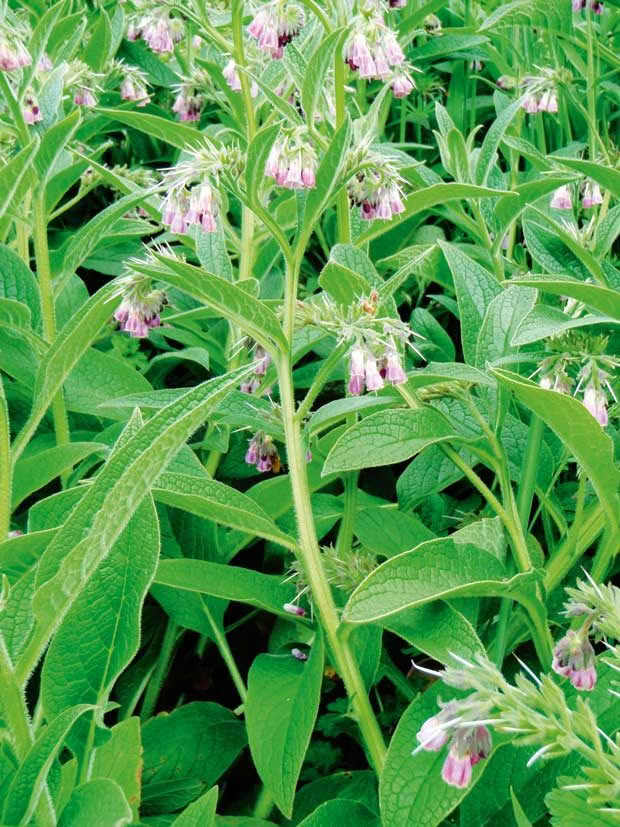
Comfrey is good bee fodder.
We can’t do much about the weather but we can provide beehives and appealing habitats to increase the chances of pollination and encourage other pollinators. You can simplify it into the goodies versus the baddies if you like: the baddies include aphids, scale, green beetles, caterpillars, slaters and thrips. On the side of the goodies are lacewings, praying mantis, ladybirds, hoverflies, earwigs, bees, bumblebees, spidersand centipedes.
Plants to attract the goodies – it’s the flowers they like – include coriander, comfrey, cosmos, lupin, rudbeckia, parsley, garlic and chives, clover, wild and tame carrot, echinacea and the star of them all, phacelia. These lovely plants also look good in the orchard. Leaving a few wild areas around the garden means grasses can go through their natural cycle of growth, flowering and seeding which provides a wintering over habitat for the insects.
Too much ‘neat and tidy’ can be damaging to gardening health (my theory is that includes too much housework inside as well). Having a mixed orchard, beneficial plantings and not spraying pesticides will also encourage a wide variety of beneficial insects to help the orchard become a fruitful reality.
IN THE FLOWER GARDEN
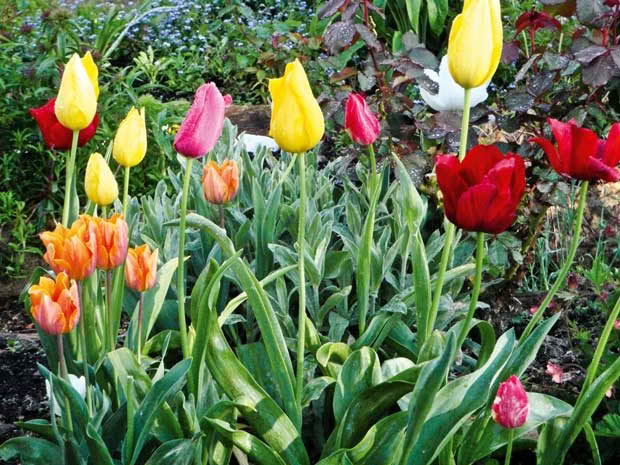
Tulips in the spring garden.
September is a luminous sort of month with the sun climbing higher in the sky every day, the clear colours of the spring flowers catching the light in the morning and evening. It all glows with the vigour of the new season.
Rainbow coloured tulips that were pushed into the soil in the autumn begin to do their bright thing. Funny things, tulips. To me they look too much and too plastic when grown on their own in regimental rows, but when clumped up with other spring plants such as forget-me-nots and violets they become much more ‘real’ to look at.
From now on there is a constant unfolding of plants, and while the flowers may be the main attraction there is much to be said for the promise of colour to come when watching the plants grow, produce flowerbuds and finally burst forth.
In the flower patches I let garlic and chives grow unchecked to create a beneficial and hopefully protective effect for its creatures. I like to to watch insects and birds going about their daily business and I enjoy seeing spiders and flying insects as I garden. I’m not so keen on the slugs and snails or aphids, although they too play their part in the endless food chain.
Weather and time permitting, September is a good month to take stock of preparation for the summer months. Compost and manures can be spread around plants to provide fertility and increase the humic content of the soil. Then it’s an ongoing job to lay mulch in its many forms, grass clippings, seaweed, pea straw, old silage, etc, to suppress the weeds, feed the soil and please the eye.
Love this story? Subscribe now!
 This article first appeared in NZ Lifestyle Block Magazine.
This article first appeared in NZ Lifestyle Block Magazine.
